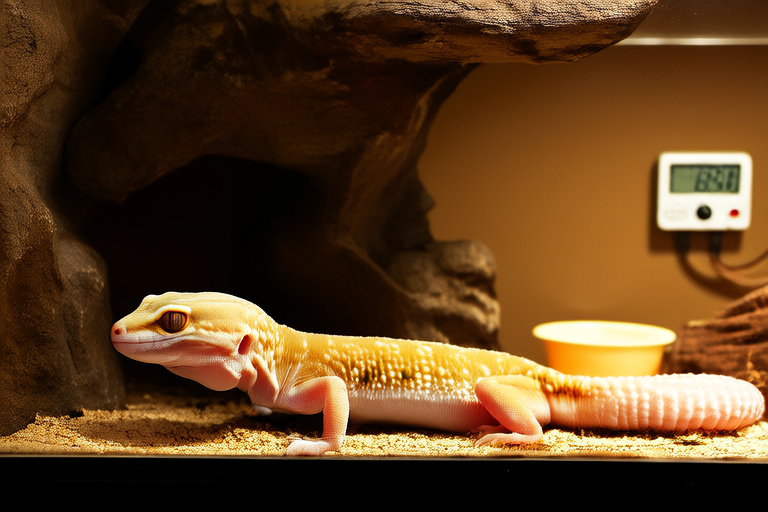How to Create the Perfect Habitat for Your Leopard Gecko
Leopard geckos are popular pets due to their docile nature and ease of care. Creating the perfect habitat is crucial for ensuring your gecko’s health and happiness. This guide covers all the essential aspects of setting up an ideal living space for your leopard gecko.
Appropriate Tank Size Based on Age
The size of the tank you choose for your leopard gecko depends on its age. For hatchlings and juveniles (up to 6 months old), a 10-gallon tank is sufficient. However, adult leopard geckos require more space; a 20-gallon long tank is recommended for adults to allow them enough room to move around comfortably.
Ideal Temperature and Humidity Levels with Safe Heating Methods
Maintaining the correct temperature gradient within the enclosure is vital for your gecko’s health. The cool side of the tank should be around 78-80°F (25-27°C), while the warm side should reach 90-95°F (32-35°C). Use a digital thermometer to monitor these temperatures accurately.
For heating, avoid heat rocks or hot spots as they can cause burns. Instead, opt for under-tank heaters (UTH) or ceramic heat emitters placed outside the tank but directed towards it. Ensure that the heater does not touch the glass directly to prevent overheating.
Humidity levels should be kept low at about 30-40%. Leopard geckos come from arid environments, so high humidity can lead to respiratory issues and skin problems. A hygrometer will help you monitor humidity levels inside the tank.
Suitable Substrate Options
Selecting the right substrate is important for preventing impaction and providing a naturalistic environment. Reptile carpet, paper towels, or indoor-outdoor carpeting are safe and easy-to-clean options. Avoid substrates like sand, gravel, or walnut shells which can be ingested accidentally during feeding.
Hiding Spots and Decorations for Environmental Enrichment
Providing hiding spots allows your gecko to feel secure and reduces stress. You can use half logs, cork bark, or commercially available hide boxes. Place one hide on each side of the temperature gradient to give your gecko options.
In addition to hiding spots, adding plants, branches, and other decorations can enhance the aesthetic appeal of the enclosure and provide additional climbing opportunities. Ensure any decorations are securely fastened to prevent falls.
Feeding Areas Setup
Setting up a dedicated feeding area helps reduce substrate ingestion and makes cleaning easier. Place food dishes in a specific corner of the tank away from water bowls. Using shallow, flat-bottomed dishes prevents food from being buried under substrate.
Importance of Maintaining Cleanliness
Cleaning the enclosure regularly is essential for preventing bacterial growth and maintaining good hygiene. Spot clean daily by removing feces and uneaten food. Perform a thorough cleaning every two weeks using reptile-safe disinfectants. Rinse thoroughly and dry before replacing the substrate and furnishings.
Lighting Requirements for Health
Leopard geckos are nocturnal creatures, so they do not require UVB lighting. However, providing a low-level red or blue light at night can help you observe their behavior without disturbing them. Ensure that the lights used do not produce excessive heat that could affect the temperature gradient.
Tips for Monitoring and Adjusting Habitat Conditions Regularly for Optimal Leopard Gecko Care
Regularly check the temperature and humidity levels using thermometers and hygrometers. Adjust heating elements or ventilation as needed to maintain optimal conditions. Inspect hides, decorations, and substrate for signs of wear or contamination. Replace damaged items promptly to ensure safety.
Monitor your gecko’s overall health and behavior. Signs of distress such as lethargy, loss of appetite, or unusual shedding may indicate issues with the habitat. Consult a veterinarian specializing in exotic animals if you notice any concerning symptoms.
Creating the perfect habitat for your leopard gecko involves careful consideration of many factors. By following this guide, you can provide your pet with a comfortable and healthy environment that promotes longevity and well-being.
